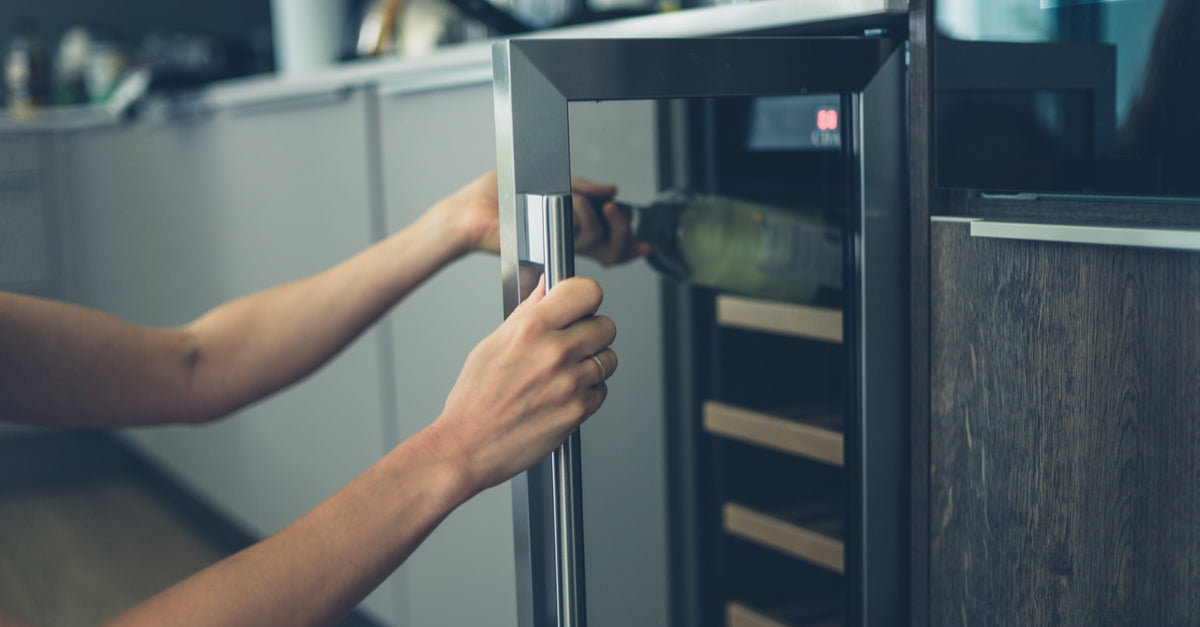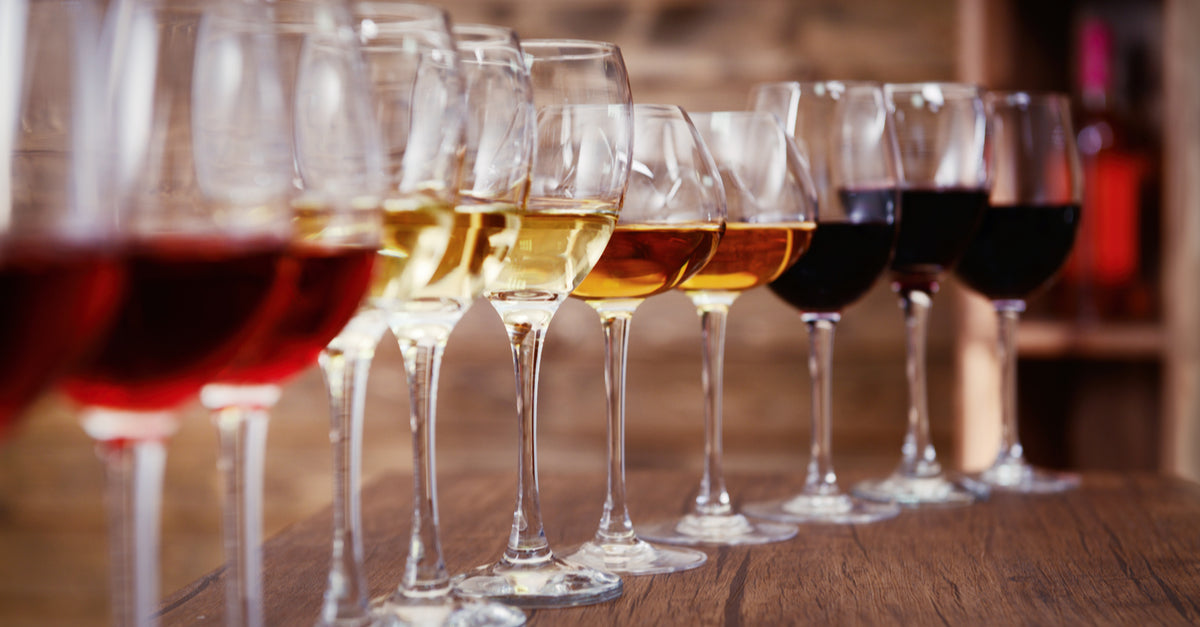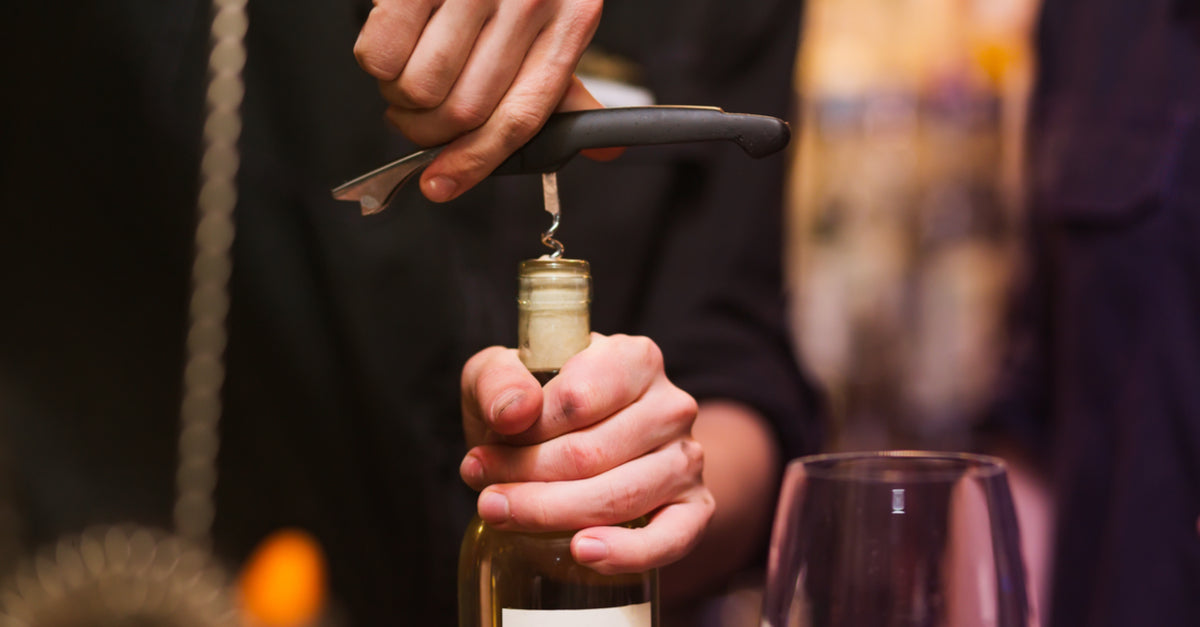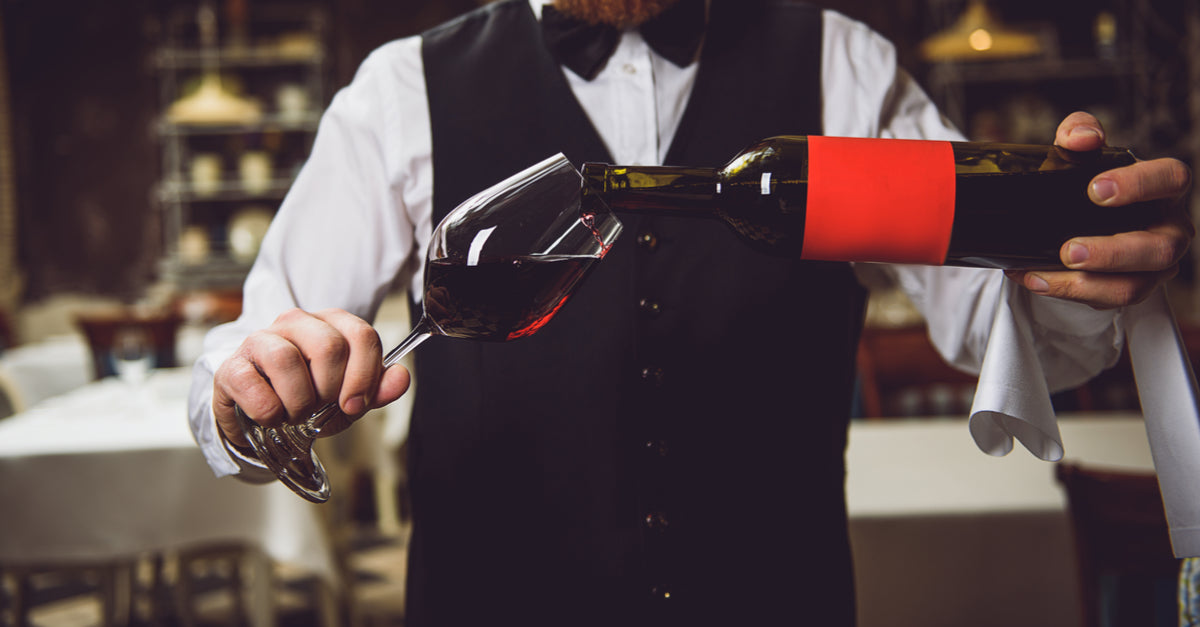Your Cart is Empty
- Christmas
- Hanukkah
- Anniversary
- Birthday
- Wine Gifts
- Wine Clubs
- Holidays
- Corporate
- Deals

Serving a bottle of wine seems dangerously straight-forward and simple - up until the minute you set out to do the task yourself. The mission gets even more daunting when you throw in a party and a handful of people in to the mix. Our guide to the basics on how to serve wine include tips for picking the right wine glasses, to pouring the wine gracefully without splashes or spills. Some of these tips will even improve the flavor of your favorite wines. Yes, you’re welcome!
LA TEMPRATURE PARFAITE

Much like many of our other favored beverages, even wines have an innate tendency to taste wildly different when served at different temperatures. And contrary to popular opinion, one temperature doesn’t fit all. We may be accustomed to popping a bottle of wine in to the fridge before we are ready to serve it, no matter what its type. However, if you want to relish your drink the way it’s meant to be, you might want to remember some of these temperature combinations for your preferred wines.
Most red wines taste better when served slightly below room temperature from 53-69 °F. While rich red wines, like Cabernet Sauvignon and Shiraz are best served at a warmer temperature, light red wines, like Pinot Noir and Zinfandel taste smoother when served slightly chilled below room temperature. If you don’t have a wine cooler, chill the lighter red wine in the refrigerator for 30 minutes before serving and take care to chill heavier reds like Merlot and Rioja, for only 15-20 minutes.
White wines taste great from about 44 – 57 °F. Serve light, zesty white wines, like Chablis and Grenache Blanc, at the lower end of the temperature spectrum at 50 °F or colder — and oak-aged white wines at the higher end. Make sure to place the wine in the fridge several hours before serving and remember to turn up the temperature by 1 or 2 notches in the fridge when you're chilling wine as regular fridge temperatures can render wines too cold.
While high quality champagnes and sparkling wines can be served at the same temperatures as that of white wine, their affordable counterparts do great at 38 – 45 °F. Place the bottle in a freezer one hour before you plan to serve it so that it reaches the desired temperature once its taken out to be popped. Placing affordable wines in the freezer additionally helps with disguising their characteristically ‘off-putting’ aromas as well. In case of expensive sparkling wines, you can even skip the freezer and just chill the wines in the refrigerator for a few hours before they are served as they tend to do better than the cheaper variety at slightly lower temperatures.
Additionally, it must be noted that any type of wine above 70°F will start to smell more alcoholic because of increased ethanol evaporation that occurs due to the rise in temperature.
THE QUINTESSENTIAL STEMS

When it comes to savoring wine the way it was intended, it’s vital to match the shape to the grape. The profile of your stemware needs to be carefully selected keeping in mind the kind of wine you want to consume. And in this case, every wine has a size and shape of stems that make their flavors and aromas blossom.
It was George Riedel, an Austrian glass maker, who in the 1980s, came out with a line of affordable machine-made crystal glasses called Vinum. The line featured different glass shapes for different types of wine as he rightly believed that the type of glass made a sizable difference to the taste of the wine it contained. Since then much has been said on the topic and we have done our best work to bring you the perfect pairings.
Light bodied white wines like Moscato and Soave stay the best in wine glasses with bowls that are tall and thin; think flutes. On the other hand, their full-bodied counterparts like Viognier, is best served in wine glasses with shorter, rounder bowls.
When it comes to red wines, the wider the opening of the bowls, the better. Full-bodied red wines like Cabernet Sauvignon taste smoother when served in tall, large red wine glasses. The low-bodied reds like Pinot Noir and Gamay, work best in shorter glasses with slightly rounder bowls. Customary long-stemmed wine glasses with big bowls are great for this.
Sparkling and rose wines, find their sweet spot in glasses with a thin bowl and a small opening. Tulips and Flute glasses are a great option for these wines as their thin and tapered bases allow the wine to evolve without letting it go flat.
A CEREMONIAL OPENING

Even though the unofficial (and rather infamous) list of ways to open a wine bottle include fidgeting with a steak knife, key and shoe, we think that the opening act to the ensuing ‘clinks’, deserves to be a classy one! Whether it’s a cork or a screwcap that you’re tackling with, there are a few tried and true ways to make a grand opening once you’ve decide to bring out the wine.
The screwcap is fairly easy to work and just needs a firm, tight grip as you unscrew it. However, if you’re faced with the task of uncorking a bottle of wine, things might get a little trickier. As the first step, cut the foil below the lower lip of the bottle. Once you’ve peeled of the excess foil on top, work the corkscrew in to the center of the cork and rotate it for 6 half turns. This does the trick for most standard wine bottles if you’re doing it right. After this lever out the cork slowly by taking care to not apply too much pressure while you lift the cork as they may result cause it to break and fall in to the wine. Once you hear the customary ‘pop’ wipe off any tartrate crystals or sediment with a napkin and pour yourself a glass; you know you deserve it after all that hard work you just put in!
TO DECANT OR NOT TO DECANT

Decanting is one of the most overlooked aspects of wine service, yet one that helps to greatly improve the flavor of the wine. But is decanting the right choice for all types of wine? To answer that would be to first deconstruct the purpose of the act. Decanting is to wine essentially what filtering is to coffee. Over a period of time wine tends to accumulate sediments that work negatively to influence its flavor, smell and texture. The classic method of decanting ensures that these sediments rest at the bottom of the glass pitcher, while the clear wine that’s ready to be poured stays fresh and aerated at the top.
Almost every wine, including the sparkling variety, gain a vibrant aroma and flavor upon being decanted. However, the question of how long the wines need to be aerated has often stirred a debate amongst sommeliers and connoisseurs alike. Even though the standard 30-45-minute rule stands for most types of wine, it’s argued that the older and more fragile wines are better off being decanted for only about 15 minutes, if at all. Some feel that an extra boost of oxygen can open up a wine and give it extra life, especially if it’s unimpressive upon first taste. It’s also a highly popular exercise when it comes to red wines. Decanting is also known to help with altering the chemical state of cheaper wines that often have an unpleasant preliminary aroma and makes them more palatable. However, several others claim that decanting makes a wine fade faster, and that a wine is exposed to plenty of oxygen when it’s swirls in the glass making decanting a rather unnecessary and frivolous exercise.
A great way to satisfy your curiosity and learn if decanting is for you would be to experiment for yourself with multiple bottles of the same wine; decant one and save the other. Figuring out which one you like better holds the answer to whether this course is one you want to indulge in.
LET THE GOODNESS FLOW

When it comes to serving wine, more often than not, there is an order and method to the process. For instance, white wines are served first, followed by red and then topped off with sweet wines. As a rule of thumb, the lighter bodied variants of each kind are served before their full-bodied counterparts. The transition to sweet wines like Sauternes and Vintage Ports is traditionally made only after sampling whites like Pinot Grigio and Asti and then the reds like Lambrusco, and Barolo.
Order aside, care should be taken to pour any bottle of wine the right way. Once you’ve decided to serve the wine, turn the bottle horizontally to start pouring. The neck and lip of the bottle should be hovering about an inch above the rim of the wine glass you’re pouring the wine into. Never rest the neck on the rim of the glass. Take care to ensure that the side of the wine bottle should be parallel with the surface the wine glass is. Pour with a swift, steady motion as any hesitation might result in wine dripping down the side of the bottle. Additionally, avoid moving or tipping the bottle when you’re pouring to prevent wine from splashing out of the glass.
A bottle of wine usually contains just over 25 ounces so the norm when it comes to filling up a glass it to pour about 5-6 ounces of the wine into it. Never fill wine glasses all the way up to the rim. Carefully watch the level of wine as you're pouring so you know when to stop. If you’re not sure what 5-6 ounces looks like, a great way to learn would be by using a measuring cup and memorizing where the wine comes up to on each kind of wine glass. This way you know when to stop pouring while you’re doing it for your guests.
Once you’ve poured out the glasses and handed them over, make sure to sit back and relish the wine in the company of good friends and good conversation; because aside of mastering wine service the single most thing that makes the ritual special, is savoring the moment!
Author: Natasha Pradeep